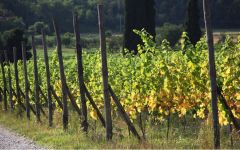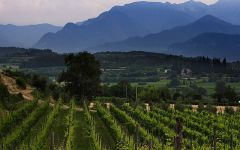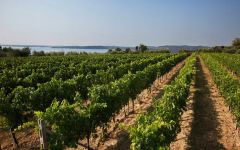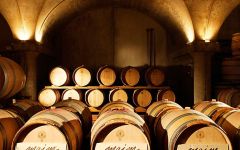Conterno Fantino Barolo Mosconi Vigna Ped 2013
-
Robert
Parker -
Wine
Spectator -
James
Suckling



Product Details
Your Rating
Somm Note
Winemaker Notes
Professional Ratings
-
Robert Parker's Wine Advocate
The 2013 Barolo Mosconi Vigna Ped takes on a life of its own almost as soon as it is poured into the glass. This is a dominating effort. It shows muscle and volume with throbbing contrasts between austerity and sweetness. I must admit that it is almost too much of a good thing, and I almost disliked the wine until it convincingly won me over, thanks to its subtle evolution in the glass. Based on a massal selection, the grapes were planted as far back as 1950. Select commercial yeasts were used in winemaking up until 2008, but ambient yeasts have taken over since 2011. Dark and super rich fruit is followed by exotic spice, cured leather and smoked bacon. The finish is robust and layered. It needs many more years until it fleshes out and straightens out. This is a bottle to keep in your cellar.
-
Wine Spectator
This red evokes cherry, leather, earth and even a hint of manure in the aromas and flavors, yet has plenty of stuffing and flesh to offset the austere tannins. Leaves you wanting more on the lingering aftertaste. Best to cellar for a decade. Best from 2023 through 2045.
-
James Suckling
Blackberry and floral aromas with hints of spices. Wet earth, too. Medium body and fine and silky tannins that are very polished. Drink or hold.
Other Vintages
2020-
Wine
Enthusiast -
James
Suckling
-
Wine
Spectator -
Robert
Parker -
James
Suckling
-
Robert
Parker -
Wine &
Spirits
- Vinous
-
Robert
Parker -
Wine
Spectator -
Wine
Enthusiast
-
Wine
Spectator -
Robert
Parker -
James
Suckling
-
Wine &
Spirits -
Robert
Parker -
James
Suckling
-
James
Suckling -
Wine &
Spirits -
Wine
Spectator
-
Wine
Spectator -
James
Suckling -
Wine &
Spirits
- Decanter
-
Wine
Spectator -
James
Suckling
-
Robert
Parker
-
Wine
Spectator -
Robert
Parker
-
Wine
Spectator -
Robert
Parker
-
Robert
Parker -
Wine
Spectator







Responsible for some of the most elegant and age-worthy wines in the world, Nebbiolo, named for the ubiquitous autumnal fog (called nebbia in Italian), is the star variety of northern Italy’s Piedmont region. Grown throughout the area, as well as in the neighboring Valle d’Aosta and Valtellina, it reaches its highest potential in the Piedmontese villages of Barolo, Barbaresco and Roero. Outside of Italy, growers are still very much in the experimentation stage but some success has been achieved in parts of California. Somm Secret—If you’re new to Nebbiolo, start with a charming, wallet-friendly, early-drinking Langhe Nebbiolo or Nebbiolo d'Alba.

The center of the production of the world’s most exclusive and age-worthy red wines made from Nebbiolo, the Barolo wine region includes five core townships: La Morra, Monforte d’Alba, Serralunga d’Alba, Castiglione Falletto and the Barolo village itself, as well as a few outlying villages. The landscape of Barolo, characterized by prominent and castle-topped hills, is full of history and romance centered on the Nebbiolo grape. Its wines, with the signature “tar and roses” aromas, have a deceptively light garnet color but full presence on the palate and plenty of tannins and acidity. In a well-made Barolo wine, one can expect to find complexity and good evolution with notes of, for example, strawberry, cherry, plum, leather, truffle, anise, fresh and dried herbs, tobacco and violets.
There are two predominant soil types here, which distinguish Barolo from the lesser surrounding areas. Compact and fertile Tortonian sandy marls define the vineyards farthest west and at higher elevations. Typically the Barolo wines coming from this side, from La Morra and Barolo, can be approachable relatively early on in their evolution and represent the “feminine” side of Barolo, often closer in style to Barbaresco with elegant perfume and fresh fruit.
On the eastern side of the Barolo wine region, Helvetian soils of compressed sandstone and chalks are less fertile, producing wines with intense body, power and structured tannins. This more “masculine” style comes from Monforte d’Alba and Serralunga d’Alba. The township of Castiglione Falletto covers a spine with both soil types.
The best Barolo wines need 10-15 years before they are ready to drink, and can further age for several decades.
